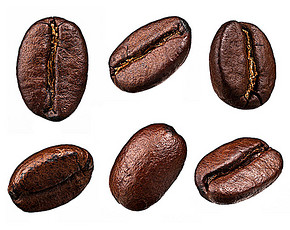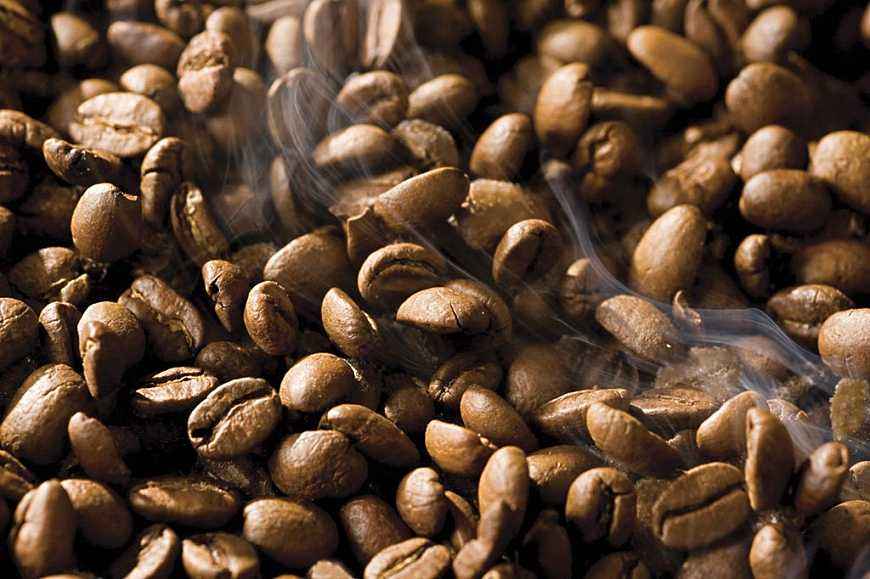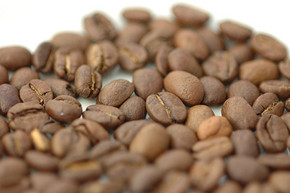How do you handle Costa Rican coffee beans?
Follow the caf é (Wechat official account vdailycom) and found that Beautiful Cafe opened a small shop of its own.
Costa Rica is a coffee-rich country with a long history. It is said that the first "Arabic Coffea" seeds were brought to Europe from Arabia and Yemen. European businessmen brought coffee seeds to Costa Rica in the 18th century. After centuries of development, coffee has gradually become the main pillar industry of Costa Rica's economy. 80% of coffee is exported to the United States and Europe to make profits, which is used to promote the rapid economic, social and cultural development of Costa Rica. so Costa Ricans turn coffee into "golden beans."
Costa Rican coffee is small grain coffee (Arabica Coffea), the quality is very good, coffee plantations are generally at an altitude of 800-1200 meters, volcanic soil, an average temperature of 25 degrees Celsius, the harvest season is from October to February of the following year. After the coffee fruit is ripe, in the harvest season, a large number of Nicaraguans flock to Costa Rica to pick the coffee fruit, all by hand to ensure the quality. Unfortunately, we didn't catch the harvest season this time, and we didn't see the busy harvest scene during coffee picking.

Here are the main procedures for coffee processing:
The first step, the screening of coffee beans, divided into different grades.
Walk into Costa Rica-Coffee Tour
The second step is to remove the shell.
The third step is fermentation.
Part IV, second-and third-class machine drying. First-class products are required to be dried naturally.
Step five, store.
These are first-class products and require natural drying in the open air, which usually takes five days.
First-class products are exported to Europe, America and Japan.
Second-class products are exported to Southeast Asian countries.
Third-class products, broken grains, peel and impurities, mainly sold to the Chinese market, the production of instant coffee.
How to bake a good coffee depends on your level. Generally, it is roasted by machine for 12 minutes, and the color and taste are light. If the taste is heavy, it takes 15 minutes to bake. Some people also like blended coffee, which tastes more unique, but requires grinding and cooking at the right time.
Important Notice :
前街咖啡 FrontStreet Coffee has moved to new addredd:
FrontStreet Coffee Address: 315,Donghua East Road,GuangZhou
Tel:020 38364473
- Prev

Description of taste and flavor of super Hawaiian Kona coffee beans
Following caf é (Wechat official account vdailycom) found that Beautiful Cafe opened a small shop of its own in Hawaii, where you can watch the fiery sunset sink into the red-orange sea, feel the fresh air filled with the scent of flowers, and sit by the sea drinking a cup of fragrant Kona coffee. I'm afraid there is no place in the world that can offer you such enjoyment. The earliest settlers in Hawaii
- Next

Costa Rican coffee bean production area altitude taste flavor grading system what is hard bean extremely hard bean?
Following Cafe (official Wechat account vdailycom) found that Fairview Cafe opened a small shop of its own Costa Rica and Guatemala are legendary places to produce the most perfect and quality coffee, and Costa Rican coffee has a reputation as Switzerland among the coffee-producing countries. The coffee produced in Costa Rica is known for its strict quality, and inferior or inferior goods are often discarded. Because of my brother
Related
- Detailed explanation of Jadeite planting Land in Panamanian Jadeite Manor introduction to the grading system of Jadeite competitive bidding, Red bid, Green bid and Rose Summer
- Story of Coffee planting in Brenka region of Costa Rica Stonehenge Manor anaerobic heavy honey treatment of flavor mouth
- What's on the barrel of Blue Mountain Coffee beans?
- Can American coffee also pull flowers? How to use hot American style to pull out a good-looking pattern?
- Can you make a cold extract with coffee beans? What is the right proportion for cold-extracted coffee formula?
- Indonesian PWN Gold Mandrine Coffee Origin Features Flavor How to Chong? Mandolin coffee is American.
- A brief introduction to the flavor characteristics of Brazilian yellow bourbon coffee beans
- What is the effect of different water quality on the flavor of cold-extracted coffee? What kind of water is best for brewing coffee?
- Why do you think of Rose Summer whenever you mention Panamanian coffee?
- Introduction to the characteristics of authentic blue mountain coffee bean producing areas? What is the CIB Coffee Authority in Jamaica?

